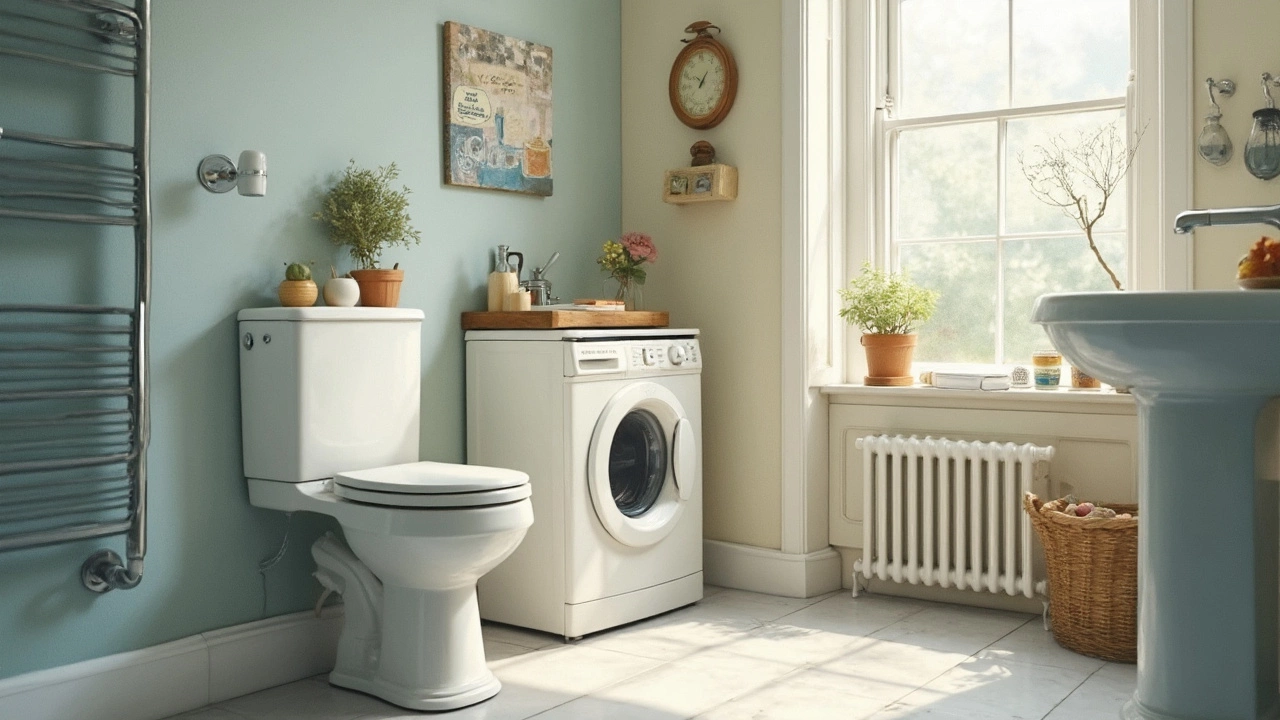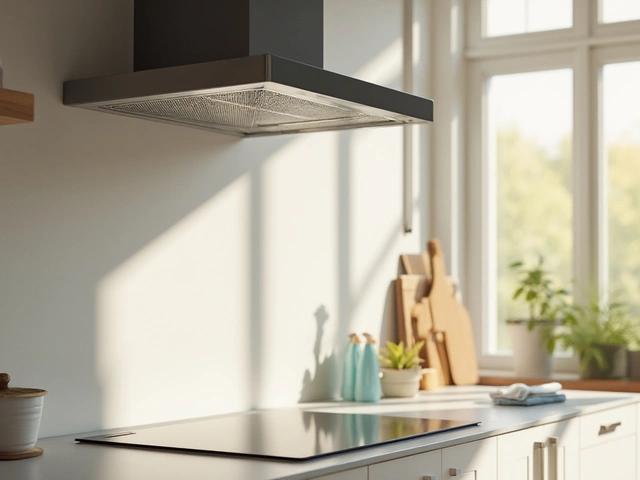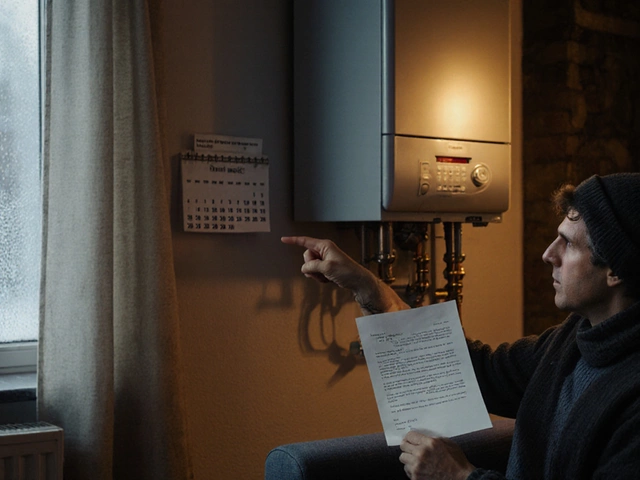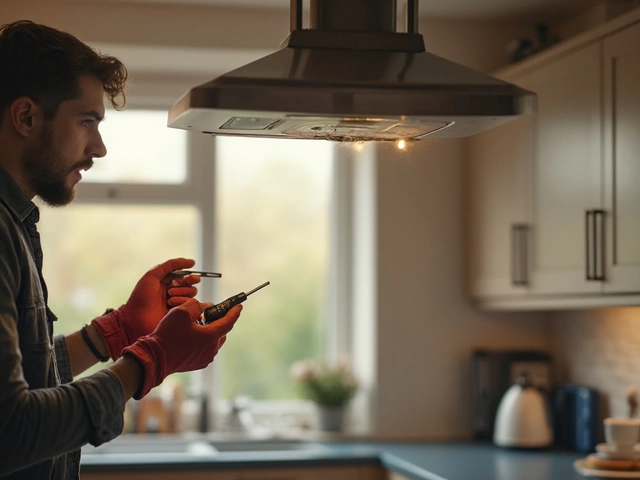Ever heard someone call a toilet an appliance and felt confused? You’re not alone. Toilets are everywhere, but few people actually know if they’re supposed to be in the same category as the dishwasher or washing machine. Let’s clear things up right away.
The tough part is, there isn’t one solid answer because the word “appliance” means different things to different folks. If you look at real estate listings or building codes, toilets usually show up as plumbing fixtures—not appliances. The difference? Fixtures are things that get hooked up to your home's plumbing and usually stay put; appliances, like fridges or ovens, can often be unplugged and moved around more easily.
This isn’t just splitting hairs. Knowing whether your toilet is considered an appliance or a fixture can change who you call for repairs, what to watch for on your home insurance, and even whether it makes the list when you’re buying or selling a house. Stick around—we’ll dig into where the toilet really belongs and why it all matters more than you might think.
- Understanding Appliances vs. Fixtures
- Where Toilets Fit: The Industry View
- Why the Definition Matters for Homeowners
- Toilet Care Tips and Maintenance Tricks
Understanding Appliances vs. Fixtures
If you’ve ever wondered why the toilet doesn’t get lumped in with your stove or washing machine, it comes down to how stuff in your home is built and what it does. The official rule of thumb: appliances are usually stand-alone machines that do a job and can often be unplugged or moved without messing up the place. Think of things like your microwave or dryer. Fixtures, on the other hand, are attached to pipes or your house in a more permanent way—like sinks, bathtubs, and yes, that toilet.
Here’s a quick breakdown of the key differences:
- Appliances: Use electricity or gas most of the time, can be detached without much trouble, and are often covered by manufacturer warranties.
- Fixtures: Hardwired (or sometimes plumbed) into the house, not meant to be moved, and usually become part of the property if you ever sell.
Check out how common household items are classified:
| Item | Type | Typical Connection | Moves With Homeowner? |
|---|---|---|---|
| Refrigerator | Appliance | Plugs into wall | Yes |
| Dishwasher | Appliance/Fixture* | Plugs in + hook up to plumbing | Sometimes |
| Bathtub | Fixture | Permanent plumbing | No |
| Toilet | Fixture | Permanent plumbing | No |
| Microwave | Appliance | Plugs into wall | Yes |
*Dishwashers are weird: if they’re portable and not hooked into cabinets, they can count as appliances. If built-in, they’re often labeled as fixtures.
This whole classification thing isn’t just for fun. It really matters in buying, selling, or fixing up a home. For example, when selling, most states expect fixtures to stay with the property unless you clearly say otherwise. Plus, if you ever have to call for service or replacement, knowing the difference helps you find the right pro fast.
Where Toilets Fit: The Industry View
So where do toilets stand in the world of home improvement and appliance service? The short answer: toilets show up time and again as plumbing fixtures, not appliances. Officials with the International Plumbing Code (IPC) and National Association of Home Builders both call out toilets as fixtures, pointing out that they're permanently attached to your home’s plumbing system. Unlike a fridge or dishwasher, you can’t just unplug a toilet and swap it out on a whim.
Check any standard home inspection checklist or real estate listing—"toilet" is always lumped in with sinks, bathtubs, and showers. Meanwhile, true appliances like washing machines and garbage disposals are put in a separate category. Service technicians know it too: plumbers deal with toilets, while appliance repair folks handle stoves, dryers, and the like.
Here’s a quick snapshot of how pros and industry guides divide things up:
| Type | Examples | Who Installs/Repairs |
|---|---|---|
| Plumbing Fixtures | Toilet, sink, bathtub | Licensed plumber |
| Appliances | Dishwasher, washing machine, refrigerator | Appliance repair technician/electrician |
Still, the line can blur. In some home warranty plans, toilets might show up under "plumbing appliances," but that’s the exception, not the rule. Most experts use the word "appliance" when they’re talking about something powered by electricity or gas, usually with moving mechanical parts. Toilets are powered by gravity and water pressure, not a wire or a plug.
If you ever need a repair or inspection, knowing what goes where saves time and possibly money. Call a plumber, not an appliance repair guy, if your toilet is leaking, running, or worse.
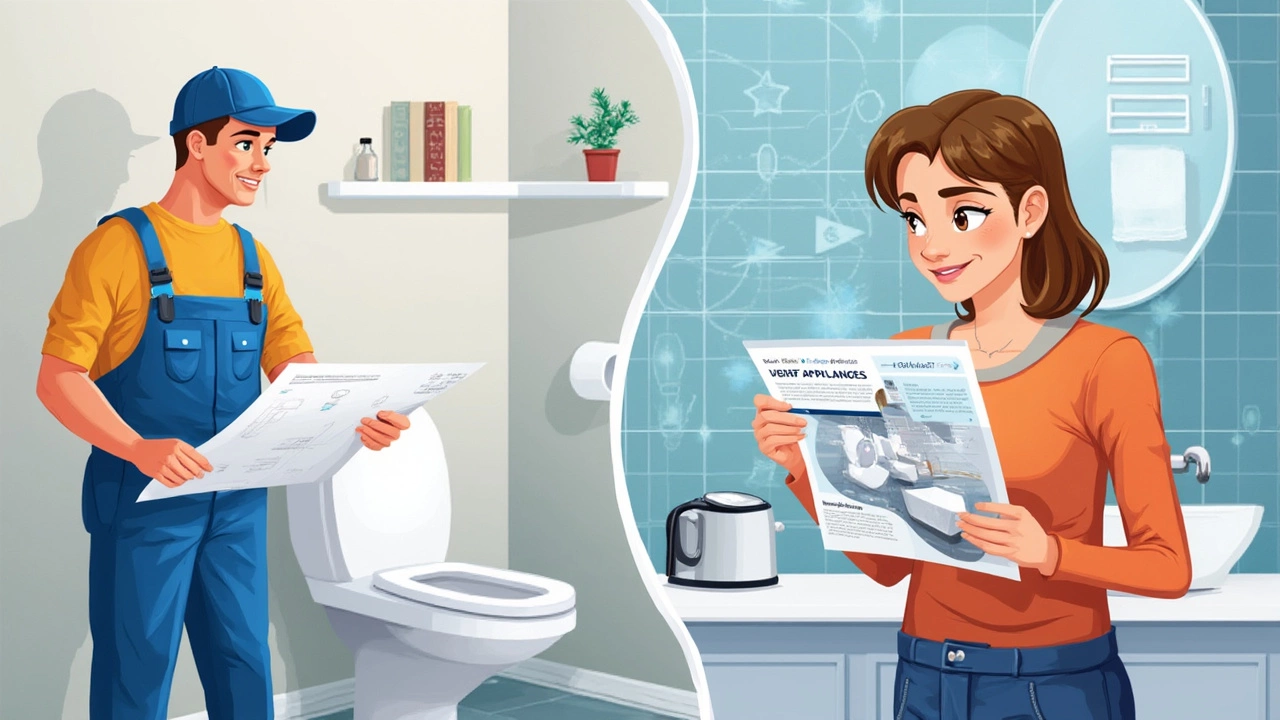
Why the Definition Matters for Homeowners
You might not think much about whether your toilet is called a fixture or an appliance, but the difference can actually save you stress, time, or even money. Here’s where it gets real: things change depending on what your toilet is considered, from repairs to home insurance claims.
Let’s break down a few key points where this matters:
- Home warranties: Most home warranty plans cover appliances like washing machines and fridges, but they don’t always include toilets. Toilets usually fall under plumbing coverage, not appliance coverage, so don’t get caught by surprise if your plan skips it.
- Insurance claims: Home insurance policies treat toilets as part of your plumbing, like sinks and bathtubs. So, if your toilet leaks and floods the bathroom, your policy’s plumbing section will probably handle it—not the appliance section.
- When selling your home: Bathroom fixtures like toilets are expected to stay when you sell. Appliances, on the other hand, aren’t always included and can be negotiated. No one expects you to take the toilet with you!
- Who to call for repairs: If the toilet clogs or the tank leaks, call a plumber, not an appliance repair tech. This saves you an extra trip charge and gets you the right fix faster.
Here’s a quick comparison table for how toilets are treated versus typical appliances:
| Issue | Toilet (Fixture) | Washing Machine (Appliance) |
|---|---|---|
| Warranty Coverage | Plumbing plan | Appliance plan |
| Repair Professional | Plumber | Appliance technician |
| Stays or Goes on Sale | Stays (fixture) | Usually goes (appliance) |
| Insurance Section | Plumbing | Appliance |
Basically, calling your toilet a fixture instead of an appliance gets you the right help, the right coverage, and keeps headaches to a minimum when you’re dealing with repairs or paperwork. If you ever find yourself filling out warranty forms, double check which category your toilet falls under—that quick check can make a big difference later.
Toilet Care Tips and Maintenance Tricks
Keeping your toilet running smooth saves you money and prevents headaches. Seriously, most issues—clogs, leaks, weird noises—are totally avoidable with a few simple habits.
A good rule of thumb: give your toilet a look-over every month. Small leaks can waste hundreds of gallons a year without you noticing. According to the EPA, a leaky toilet can lose up to 200 gallons of water per day. That’s real money literally going down the drain.
- Toilet cleaning should happen weekly. Use a toilet-safe cleaner and brush, focusing on the bowl’s rim where buildup hides out. Don’t forget the seat, handle, and base—bacteria love those spots.
- Only flush toilet paper and, well, what belongs there. Even “flushable” wipes often clog pipes. Cat litter, paper towels, and anything else should stick to the trash.
- If your water keeps running, check the flapper in the tank. Sometimes it’s an easy fix—just realign or replace it for a few dollars.
- Hear gurgling when you flush? That means a vent could be blocked. Don’t ignore it, as pressure problems can mess with your whole plumbing system.
- Take care when dropping cleaning tablets in the tank. Some cause worn-out parts or corrosion over time, especially those with bleach. Stick to bowl cleaners instead.
Want to spot a leak? Here’s a trick: add a couple drops of food dye in the tank. Wait 20 minutes, and if you see color in the bowl, you’ve got a leak.
| Problem | Likely Cause | Quick Fix |
|---|---|---|
| Constant running water | Faulty flapper or fill valve | Replace the flapper or adjust/replace fill valve |
| Weak flush | Clogged rim holes or low tank water | Clean rim holes or adjust float for more water |
| Leaking around base | Bad wax ring | Replace wax ring—call a pro if unsure |
| Toilet won’t flush | Clog or broken handle | Use a plunger; check handle and chain |
If you’re handy, most fixes cost less than $20 in parts. Just don’t ignore warning signs. Regular checks will keep your toilet (and wallet) in good shape for years.

